A Typewriter, Some Staples and a Letter From ‘Richard Nixon’
In Part 1 of a fascinating photo essay series, Sherry Lawrence digs through her archive and pieces together the scrappy, DIY beginnings of U2’s first magazine
Part 1 - 1981-1985
It may sound outlandish, but not that long ago U2’s official fan outreach relied merely on a typewriter, a photocopier and piles of envelopes. It was all they had to alert their followers with updates.
The band’s theory in 1981 was simple: build a connection with your core audience and you’ll sway hearts and minds to your message, whether to change the world or get people dancing. Thus began the U2 Info Service and U2 Magazine.
It was a humble approach - it had to be given this was long before the days of PopMart-sized budgets - but it was a tangible and personal one. Many fans still fondly recall those early years of U2’s career, when the ‘punk aesthetic’ of a few folded sheets of A4 paper meant fans could engage directly with the band’s crew and sometimes the band themselves.
There’s a certain kind of warm glow that comes from pulling out old copies of U2 Magazine (affectionately known as the “pre-props” since they came before Propaganda) and reminiscing about what U2’s fandom was before a more impersonal and corporate web entity took over. U2.com tried to pick up where it left off, but it could never replace the tangible excitement brought by the mail every three months.
From 1981-1985, the magazine’s 16 issues detailed the band’s gig schedule, song lyrics and touring equipment, while also publishing interviews given to other media outlets, and photos not seen elsewhere. It broke through the ‘fourth wall’ to connect with their core audience, and the man behind it all at the time was London-based Geoff Parkyn.
Parkyn dabbled with other band-sanctioned official fan magazines in the 1980s, working with Genesis, Status Quo and Big Audio Dynamite. By 1984, he had written illustrated discography biographies for Elvis Costello and Genesis. In 1988 he also published U2: Touch The Flame, which charted the band’s journey to superstardom.
Parkyn’s stroke of inspiration was to invite fans to be a part of U2 Magazine in the opening letter of Issue 1. At the heart of it all was an invitation to connect with the music, the message and each other.
Over the next few issues, Parkyn personally answered fans’ questions (including, amusingly, one from a “Richard Nixon” in Nantwich, Cheshire, UK - let’s assume not the former U.S. President) and encouraged them to send any correspondence to Sister Sister, the band’s information service. The output was rich: fans submitted concert reviews, stories of band encounters and personal essays about songs, as well as puzzles and drawings.
Soon the band themselves were contributing to the magazine. Issue 3 in February 1982 included a handwritten note from The Edge, who in a wry sign-off said that “the only plan is no plan” (see below).
This personal touch went a long way towards building a connection between U2 and its audience. It also helped that there were interviews with the band members and production crew that you could only get through U2 Magazine.
This sense of intimacy helped grow its reach within the span of just a year. Word-of-mouth amongst the fandom reached from Ireland to Japan, North America to Australia, and all points in between. Fans wanted to connect with each other, so U2 Magazine started a pen pals/swops & trades section for fans to do just that. This section soon became Connect!, becoming The Grapevine in years later with Propaganda. There was only one rule: “We will not accept listings for illegal recordings of U2, however obtained.”
While fans generally obliged and didn’t mention tape trades, pen pal letters between U2 fans fed a vibrant underground tape-trading community.
This grassroots approach served U2 well in the 1980s, as they could see the impact their music was having first-hand. From anecdotes about how U2’s concerts wowed fans in Belgium and Texas in 1982 to how their music changed lives, the band could see how they were connecting with their audience. Through the pages of U2 Magazine Parkyn made a safe space for fans to celebrate their love for U2, creating a community that went on to span the decades - even today.
Things changed in 1985. U2 performed at Live Aid in July, and the magazine reflected this. In what would be the magazine’s sixteenth and last issue, not only were there full-colour glossy covers, better typesetting and more focus on the global community, but an update from the Tigrayan region of Ethiopia was included, titled, “Ethiopia: Tigrayans urged not to return yet.”
An editorial shift was afoot; U2 wanted their audience to be made aware of more than just the band’s news. They began to use their official print publication to advocate for humanitarian causes that were important to them, hoping they would be important to the audience too. It’s no coincidence that U2’s first article in this vein was about refugees and famine, a cause long dear to their hearts. It’s sad that 40 years later, Tigray still faces a humanitarian crisis, with over four million people in need of humanitarian aid.
Back in 1981, it wasn’t about securing concert tickets; rather, it was about finding a sense of connection. So many long-time U2 fans miss those days and hold them in such high regard. It’s arguably played a role in fans coming back to see U2 all these years later, still nursing a deep connection to the band. It’s something many have been trying to recreate in the online forums, as anyone who even just glanced at Wire, Interference or @U2 could see.
It all goes back to that call for connection from Parkin in Issue 1 of U2 Magazine, all those years ago.
All photos sourced from Sherry Lawrence’s archive. © Lawrence / U2andUS (2024).



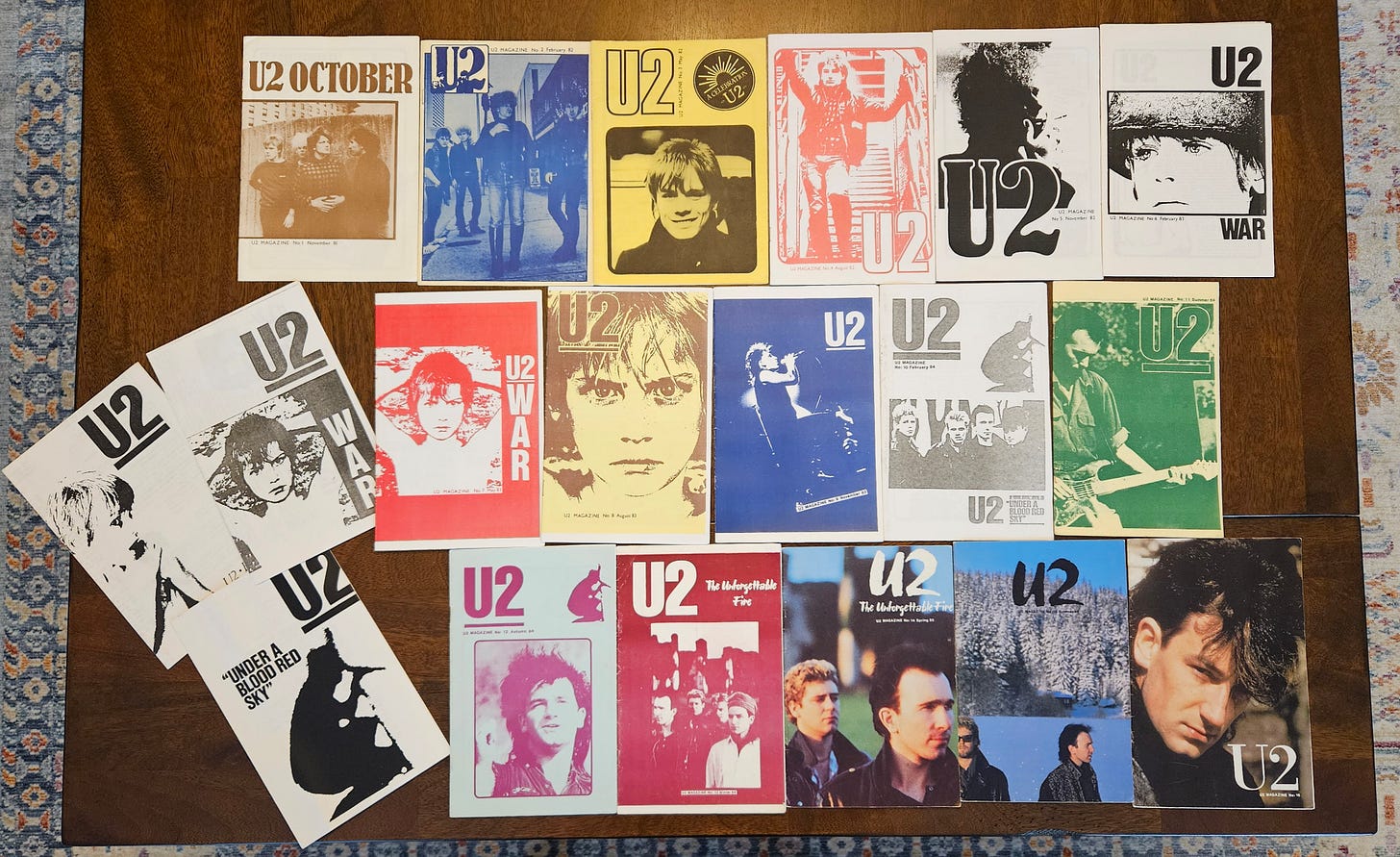
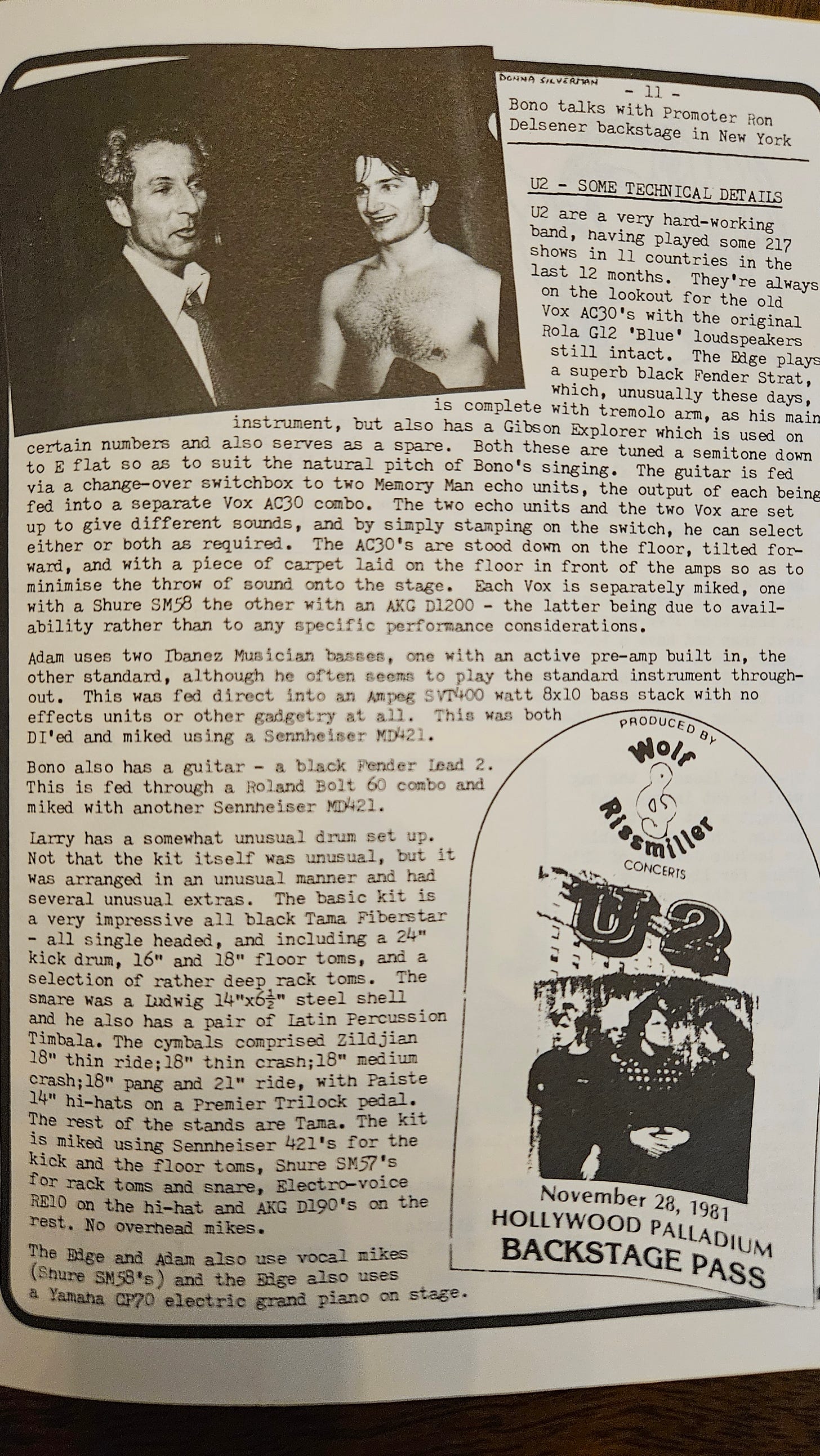
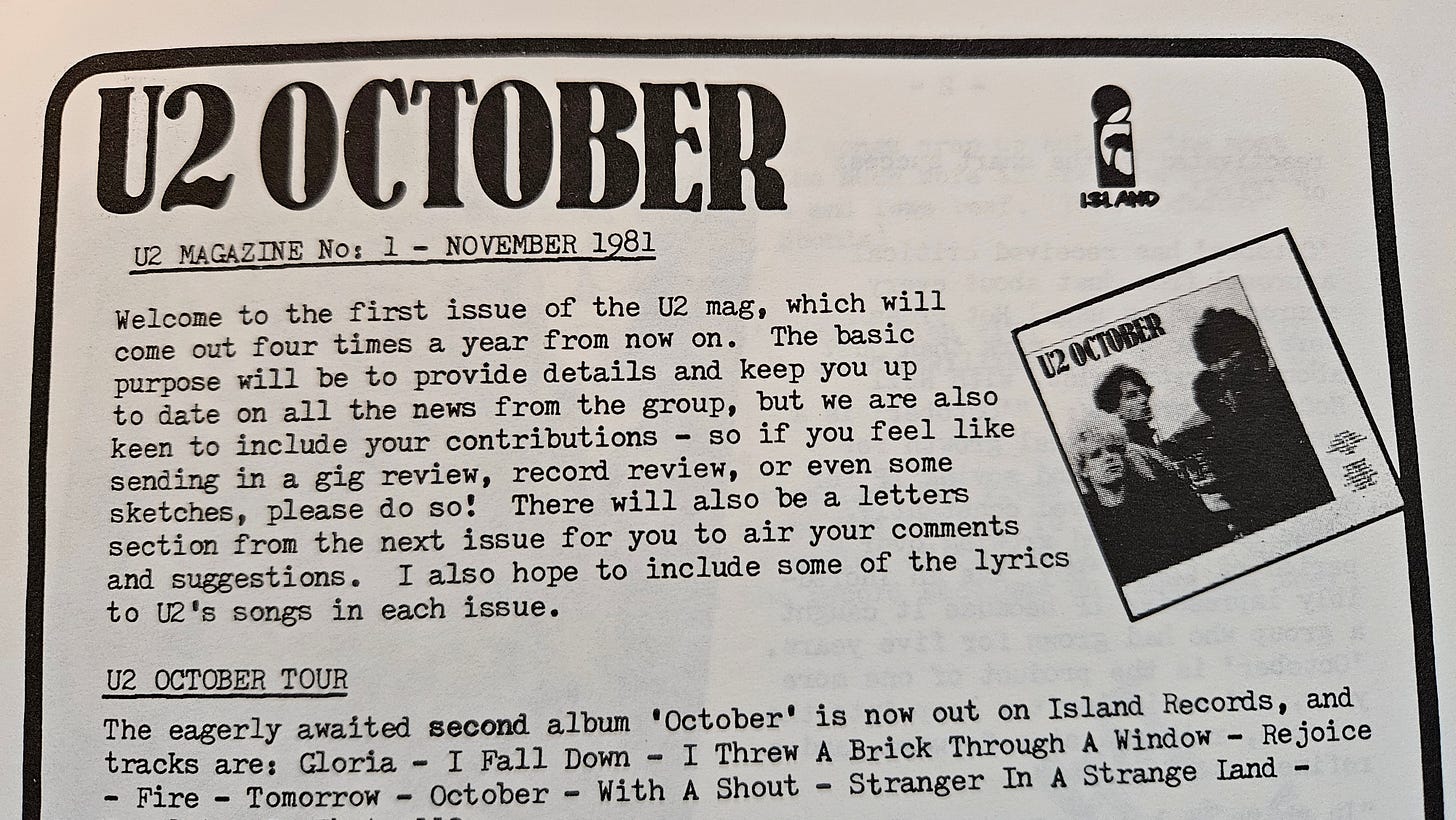
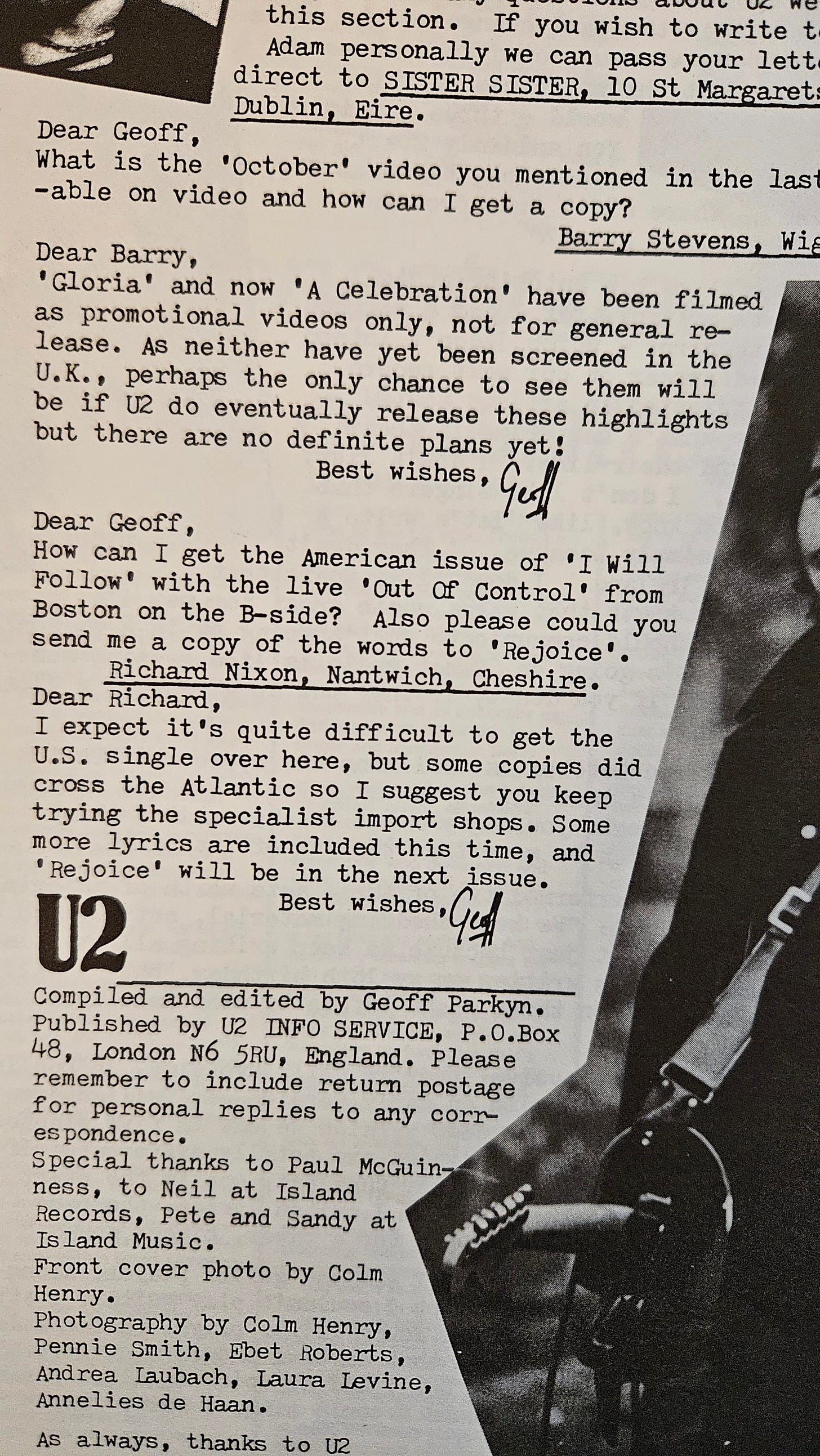
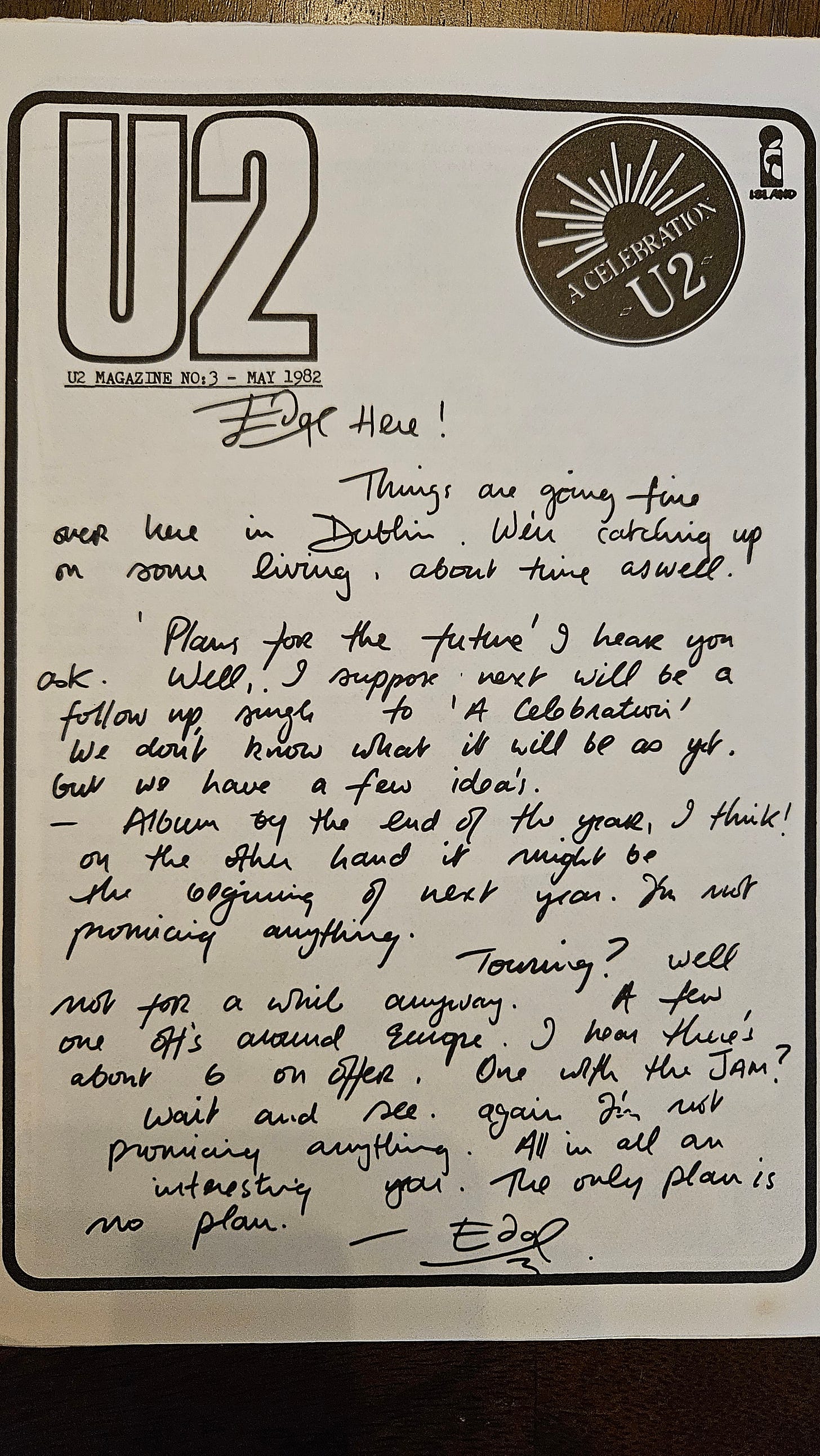
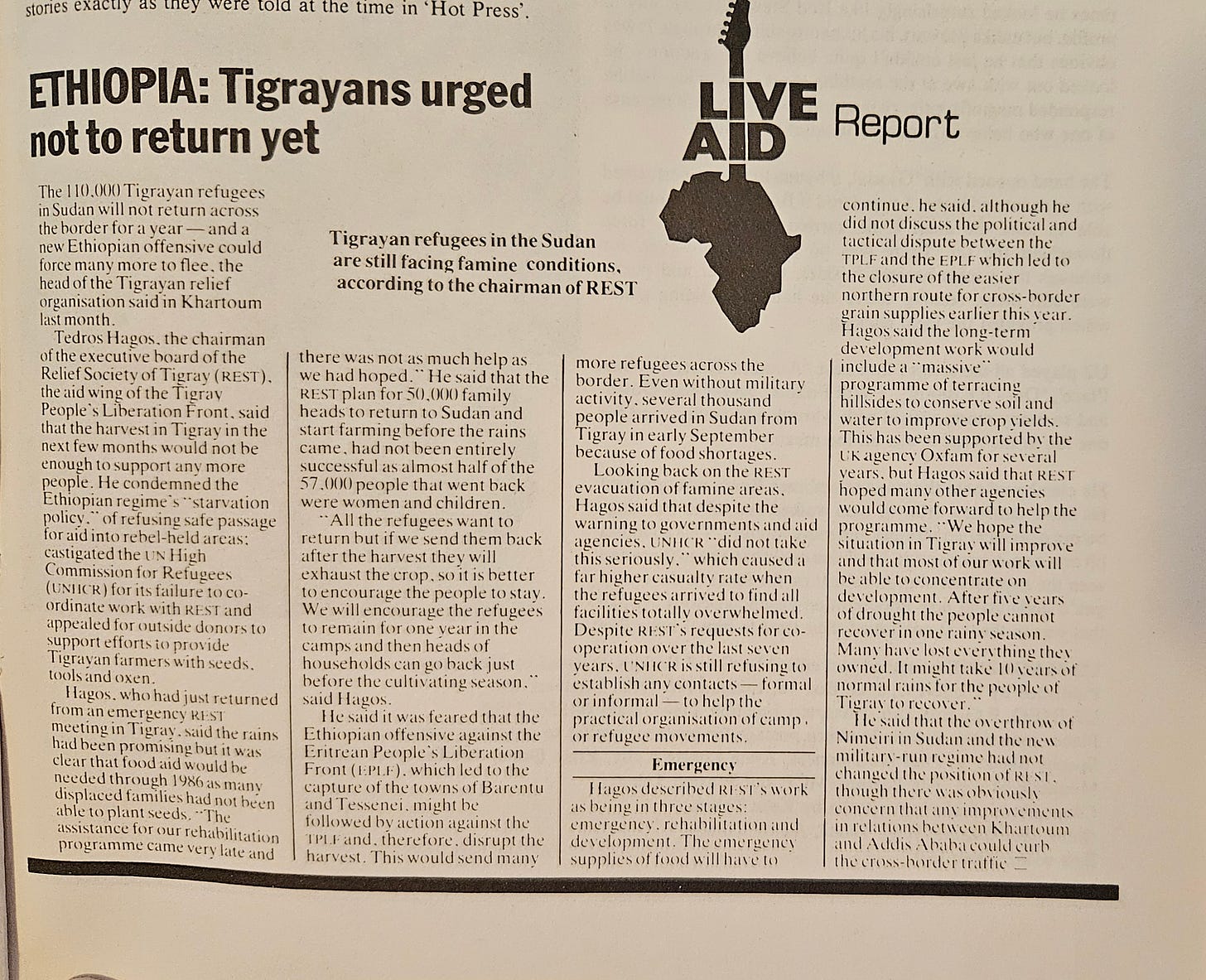
Great article! I was unaware of what existed before Propaganda. I subscribed to Propaganda and several fanzines in the late 80's. Not long ago I rediscovered all that I saved and got to enjoy the memories. So glad I saved so much U2 memorabilia over the years!